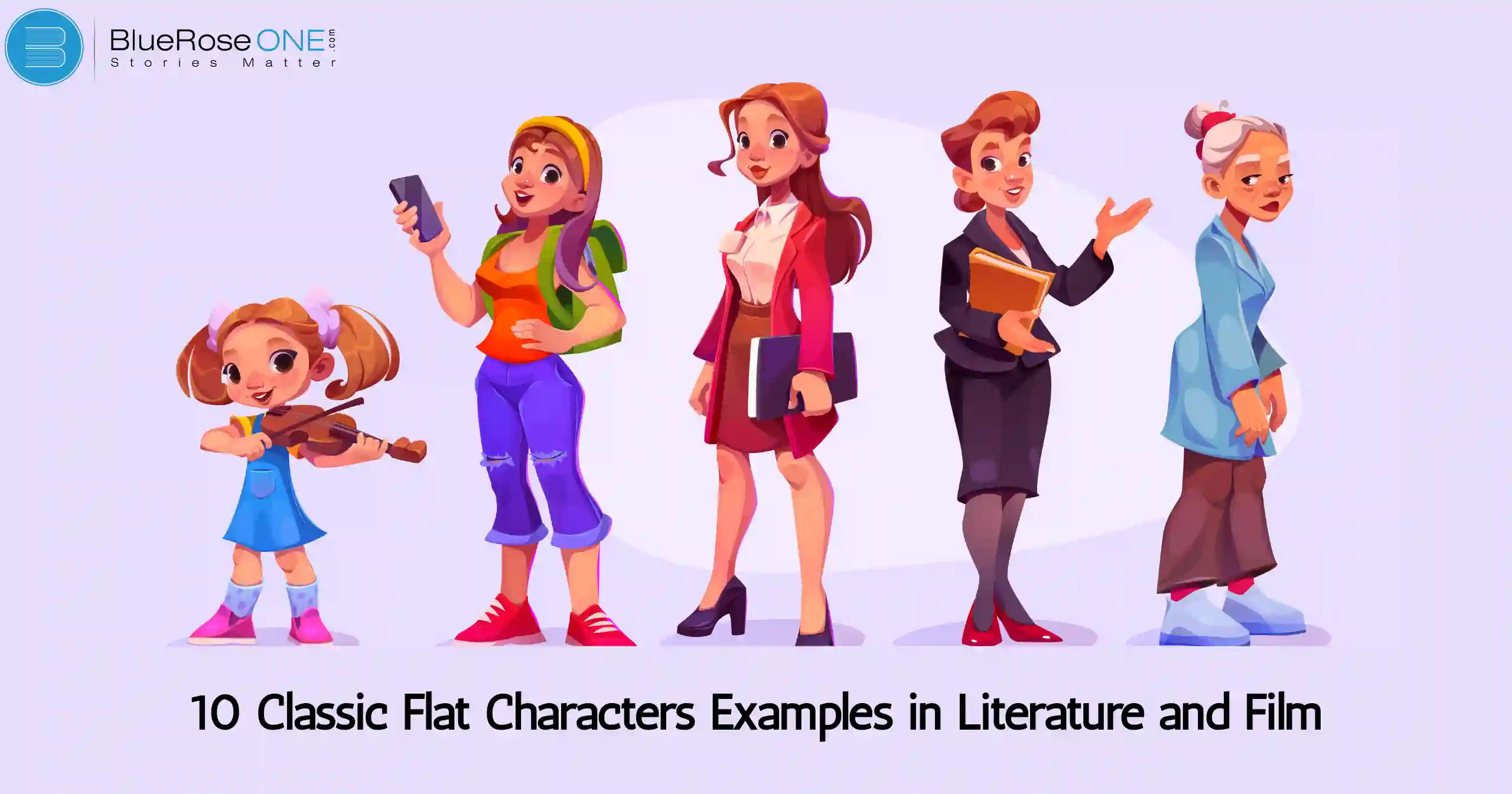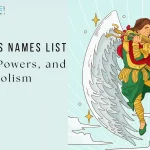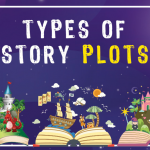Ever noticed how some characters in stories seem to have one job and do it well, no growth, no big twists, just there being their consistent, predictable selves? That’s a flat character for you. While they might not be the stars of the show, they hold the story together in surprising ways. In this article, we’re diving deep into the world of flat characters, flat character examples and breaking down 10 classic examples from both literature and film.
Buckle up, it’s more fascinating than you might think!
Table of Content
Definition of Flat Characters
Flat characters are the simple ones. They’re defined by one or two key traits and don’t really change throughout the story. They’re consistent, predictable, and often serve a very specific purpose.
Think of them as the “what you see is what you get” people in a story.
Traits of a Flat Character
- One-dimensional
- Lack emotional depth or transformation
- Often support the development of other characters
- Memorable through their consistency
- The Role of Flat Characters in Literature and Film

The Role of Flat Characters in Literature and Film
Supporting the Protagonist
Flat characters are frequently used as powerful tools to highlight and encourage the protagonist’s development. Their consistency contrasts with the hero’s complexity. These characters do not evolve, but instead serve as emotional anchors or moral compasses.
They have consistent views or attitudes, allowing the protagonist’s metamorphosis to show. For example, in many classic stories, a faithful buddy or sidekick exists exclusively to aid the hero’s journey.
Their presence highlights the protagonist’s inner conflicts without diverting attention. Flat characters reinforce themes and provide narrative consistency.
Representing a Single Idea or Trait
Flat characters are often designed to represent a single dominant idea or trait, serving as clear symbols within a story. Whether it’s loyalty, greed, innocence, or cruelty, these characters embody their defining quality without undergoing internal change.
Their simplicity makes them effective tools for highlighting central themes or contrasting more complex characters. In both literature and film, flat characters help clarify the narrative by staying true to their role, making them memorable and essential despite their limited emotional or psychological depth.
Providing Contrast or Consistency
Flat characters play a vital role in providing contrast or consistency within a story. Their limited development allows them to act as steady reference points against which dynamic characters evolve.
For instance, their unchanging traits can highlight the growth, flaws, or transformation of the protagonist. In contrast, flat characters may also reinforce a story’s theme or mood through their predictable behavior.
Whether as comic relief, loyal sidekicks, or moral compasses, they bring clarity and balance to complex narratives without overshadowing the main plot.
10 Classic Flat Character Examples
1. Mr. Collins – Pride and Prejudice
Mr. Collins from Pride and Prejudice is a prime example of a flat character. Throughout the novel, he remains pompous, obsequious, and blindly devoted to Lady Catherine de Bourgh. His exaggerated manners and lack of personal growth serve as comic relief and highlight the social satire central to Jane Austen’s narrative.
2. Mercutio – Romeo and Juliet
Mercutio, Romeo’s witty and provocative friend in Shakespeare’s Romeo and Juliet, is a classic flat character. He remains bold, sarcastic, and cynical throughout the play. His consistent traits provide comic relief and contrast Romeo’s romanticism, but Mercutio’s unwavering demeanor also sets the stage for the tragic turn in the story.
3. Miss Trunchbull – Matilda
Miss Trunchbull from Matilda is a classic flat character, embodying tyranny and cruelty without much emotional depth or change. As the authoritarian headmistress, she serves as a clear antagonist, reinforcing the story’s conflict. Her exaggerated villainy highlights Matilda’s courage and resilience, making her a memorable and effective literary foil.
4. Crabbe and Goyle – Harry Potter
Crabbe and Goyle from Harry Potter serve as classic flat characters, consistently portrayed as Draco Malfoy’s dull-witted, loyal henchmen. Their limited development and repetitive behavior bullying others and blindly following Draco highlight their narrative role as static antagonists. They provide comic relief and contrast to the more dynamic main characters.
5. Bruce the Shark – Finding Nemo
Bruce, the great white shark in Finding Nemo, serves as a classic flat character. His personality is defined by a single comedic trait: his struggle to resist eating fish, summed up by his motto, “Fish are friends, not food.” Bruce’s character doesn’t evolve, maintaining his humorous contradiction throughout the film.
6. The Wicked Witch of the West – The Wizard of Oz
The Wicked Witch of the West from The Wizard of Oz is a prime flat character, driven solely by revenge and cruelty. She lacks depth or transformation, serving as a constant antagonist. Her unwavering evil highlights Dorothy’s goodness, making her a classic example of a one-dimensional villain in literature and film.
7. Scar – The Lion King
Scar from The Lion King is a classic flat character driven by jealousy and ambition. His personality remains consistent, manipulative, cunning, and power-hungry throughout the film. Scar’s lack of character growth reinforces his role as a villain, making him a clear, unchanging antagonist in contrast to Simba’s evolving hero journey.
8. Javert – Les Misérables
Javert from Les Misérables is a classic flat character defined by his unwavering commitment to law and order. Throughout the novel, he relentlessly pursues justice, unable to reconcile his rigid beliefs with moral complexity. His lack of character evolution highlights the dangers of blind adherence to authority and rules.
9. Frankenstein’s Monster – Frankenstein
Frankenstein’s Monster in Mary Shelley’s Frankenstein is another classic flat character, primarily defined by his tragic isolation and yearning for acceptance. Though he evolves emotionally, he remains largely consistent in his sorrow and rejection. His role highlights society’s fear of the unknown, reinforcing the novel’s central themes of alienation and identity.
10. Bellatrix Lestrange – Harry Potter
Bellatrix Lestrange is a quintessential flat character in the Harry Potter series, defined by her unwavering loyalty to Voldemort and unrelenting cruelty. She remains consistently sadistic and obsessed with dark magic, showing no moral growth or complexity. Her single-minded devotion makes her a powerful, yet one-dimensional antagonist throughout the story.
Why Flat Characters Still Matter
Simplicity That Sticks
Flat characters, despite their lack of complexity, often leave a lasting impression due to their simplicity. These characters are built around a single defining trait or purpose, making them instantly recognizable and memorable.
Their clarity allows readers and viewers to quickly understand their role in the story, which helps drive the plot efficiently. Classic examples like Mr. Collins in Pride and Prejudice or Scar in The Lion King demonstrate how flat characters can become iconic, reinforcing themes or highlighting the growth of dynamic characters.
Enhancing the Main Narrative
Flat characters, despite their simplicity, play a vital role in enhancing the main narrative by providing contrast, stability, and support to the central plot. Their consistent traits and predictable behavior allow the protagonist’s journey or transformation to stand out more vividly.
Whether serving as moral anchors, comic relief, or obstacles, these characters help maintain narrative focus and rhythm. By reinforcing themes or highlighting the protagonist’s growth, flat characters ensure that the storyline remains cohesive and emotionally resonant.
Memorability Through Extremes
Flat characters frequently gain memorability by exaggerating features or extreme behaviors that make them easily memorable. Because of their simplicity, they can clearly embody a particular idea or quality such as greed, kindness, or cowardice and therefore become famous.
For example, Mr. Collins from Pride and Prejudice is memorable precisely because of his overdone sycophancy. These characters leave a lasting impression not because they are simple, but because their extreme characteristics make them stand out vividly in the eyes of readers and spectators alike.
How Writers Use Flat Characters Effectively
Symbolism and Archetypes
Writers frequently utilize flat characters as symbolic symbols or archetypes to express universal ideas without complicating the plot. These characters such as the wise mentor, the faithful sidekick, or the greedy villain have distinct characteristics that readers immediately recognize.
By doing so, authors simplify storytelling, allowing readers to focus on the protagonist’s journey or moral message. Flat characters act as constants in a changing universe, reinforcing the story’s tone and values with predictable, yet intentional behavior.
Satire and Comic Relief
Writers often use flat characters to deliver satire and comic relief, offering a sharp contrast to complex protagonists. These characters are typically exaggerated or stereotypical, making them ideal for highlighting societal flaws or injecting humor into serious narratives.
For instance, in Pride and Prejudice, Mr. Collins serves as both a satirical figure and comic relief, embodying the absurdities of social climbing and blind obedience. Such characters help underscore themes while keeping the tone engaging and accessible for readers or viewers.
Clear Moral Messaging
In literature and movies, flat figures are frequently employed to provide unambiguous moral lessons. Because of their consistency, they are perfect for symbolizing particular virtues or vices, enabling authors to emphasize moral topics with clarity and simplicity.
Characters such as Mr. Bumble in Oliver Twist or the Wicked Witch in The Wizard of Oz, for example, personify evil or hypocrisy, making it easier for viewers to understand the moral position of the narrative. The goal of the story is furthered by this clarity, particularly in didactic or allegorical works.
Conclusion
Flat characters might not steal the spotlight, but their role in storytelling is crucial. From terrifying witches to goofy sidekicks, they keep the story balanced, the main characters in focus, and the message clear. So, next time you watch a movie or read a novel, pay attention to those one-note characters. They might just be the glue holding the whole story together.
Frequently asked questions
1. What is the main purpose of a flat character?
Flat characters often support the story by highlighting the protagonist or representing a single idea without going through character development.
2. Can a flat character be a protagonist?
Rarely, but yes. In allegories are moral tales, protagonists can be flat to symbolize certain values or concepts.
3. Do flat characters ever change?
Generally, no. Their defining trait is consistency. If they grow or evolve, they start leaning into “round character” territory.
4. How are flat characters different from stereotypes?
While both are simple, flat characters are intentional and serve a narrative purpose. Stereotypes, however, are often lazy or harmful portrayals.
5. Are villains always flat characters?
Not always! Some villains like Loki (Thor) or Killmonger (Black Panther) are incredibly round. But many classic villains remain flat to keep the story focused on good vs. evil.

















[…] You may also like: 10 Classic Flat Character Examples in Literature and Film […]
[…] You may also read: 10 Classic Flat Character Examples in Literature and Film […]
[…] You may also read: 10 Classic Flat Character Examples in Literature and Film […]
[…] You may also like: 10 Classic Flat Character Examples in Literature and Film […]
[…] You may also like: 10 Classic Flat Character Examples in Literature and Film […]
[…] You may also like: 10 Classic Flat Character Examples in Literature and Film […]
[…] You may also read: 10 Classic Flat Character Examples in Literature and Film […]